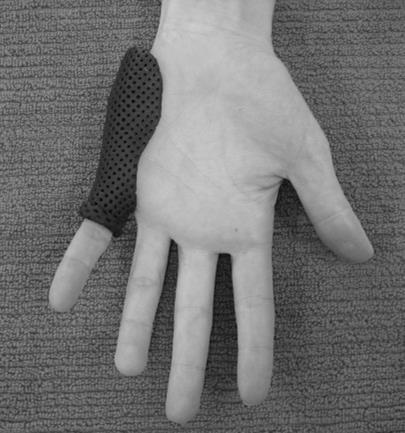Trigger Finger occurs when there is a mismatch between size of the tendon and the pulley it travels through. This can occur because the tendon is swollen from inflammation or scarring. There are five pulleys on the finger holding the tendon against the hand so they do not bowstring. The A1 pulley is on the palm side of the knuckle and is the main pulley involved in trigger finger. When you bend your finger, for example in pinching or making a fist, the thicker part of the tendon goes through the pulley and then can’t get back through, holding the finger bent. To reduce the inflammation it is best to avoid &/ or modify activities that produce the triggering, avoid pressure over the affected area, and rest the tendon/ pulley overnight.

Trigger Finger Therapy
A small thermoplastic splint worn overnight to hold the knuckle straight will prevent the tendon from getting stuck through the tunnel overnight. An alternative is a neoprene finger stall to prevent the finger bending completely. It is important to avoid pressure over the affected pulley area on the palm. Sometimes your doctor may recommend a steroid injection to assist in settling the inflammation. There are different stages of trigger finger; conservative management may not be enough if the stage is severe and the symptoms have been present for a long time. If conservative management does not help relieve symptoms you may be referred back to your doctor.


